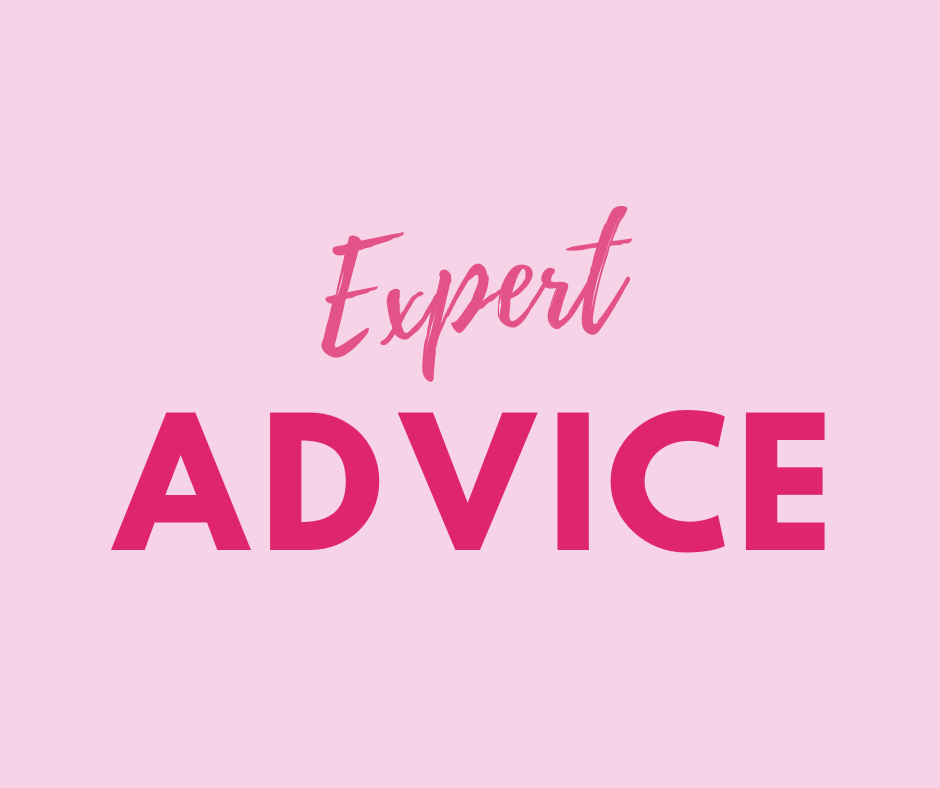This post may contain affiliate links. For full information, please see our disclaimer here and our Privacy Policy here.
Welcome to the Solo Female Travel Safety Tips and Advice page for Panama!
This page is brought to you by Solo Female Travelers Tours, our curated small group trips for women, by women.
On this page you will find first-hand, unbiased, and real safety tips, advice and reviews from women traveling solo, submitted directly from their personal experiences in the country.
Their opinions are unfiltered and submitted independently as part of the Solo Female Travel Safety Index, a ranking of 210 countries and regions based on how safe they are for women traveling solo.
The safety scores range from 1 to 4 with 1 being the safest and 4 being the most dangerous for solo female travelers.
You don’t need to login to read the below reviews. But do sign up or login to share your solo travel experiences, country safety rating and comments.
Jump straight to: Travel Tips | About the Index | Resources I Leave a Review
MAKE A DIFFERENCE – LEAVE YOUR SAFETY REVIEWS!
We can make the world a safer place for women traveling solo together. Sign up to our portal and leave your reviews NOW. Share your experience with other solo female travelers and help us empower more women through travel.
Panama Country data
We have compiled a few data points below that can help you better understand Panama and have more context when thinking about travel safety.
Official country name: Republic of Panama.
Etymology: Named after the capital city which was itself named after a former indigenous fishing village.
Country map
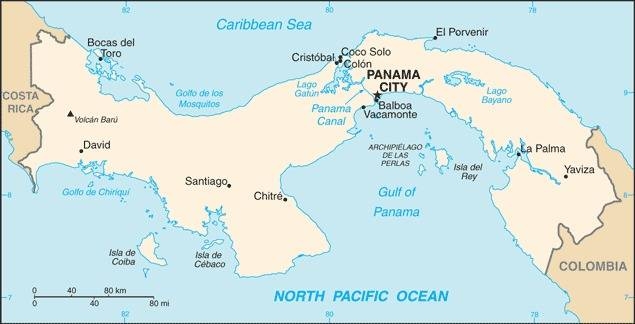
Locator map
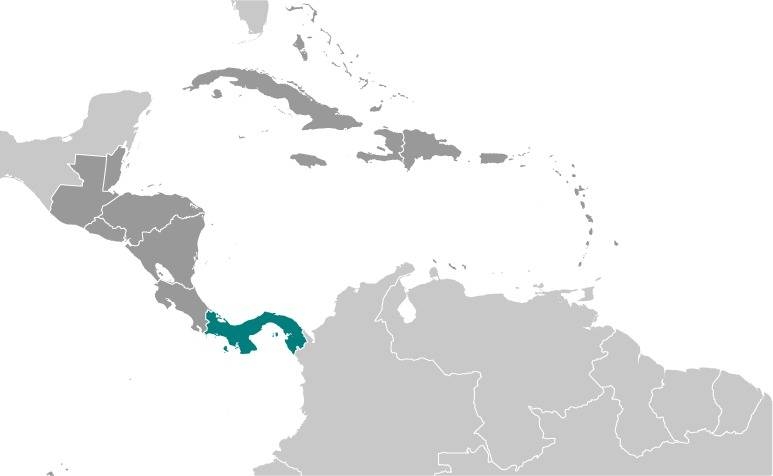
Flag
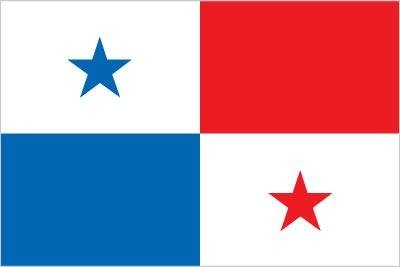
Capital: Panama City.
Independence / foundation: Explored and settled by the Spanish in the 16th century, Panama broke with Spain in 1821 and joined a union of Colombia, Ecuador, and Venezuela which was named the Republic of Gran Colombia.
When the latter dissolved in 1830, Panama remained part of Colombia. With US backing, Panama seceded from Colombia in 1903 and promptly signed a treaty with the US allowing for the construction of a canal and US sovereignty over a strip of land on either side of the structure (the Panama Canal Zone).
Population: 4 million.
Currency: Panamanian Balboa (PAB)
1 USD = 1 PAB
1 EUR = 1.09 PAB
Time zone: UTC-5
Languages spoken: Spanish (official), indigenous languages (including Ngabere (or Guaymi), Buglere, Kuna, Embera, Wounaan, Naso (or Teribe), and Bri Bri), Panamanian English Creole (similar to Jamaican English Creole; a mixture of English and Spanish with elements of Ngabere; also known as Guari Guari and Colon Creole), English, Chinese (Yue and Hakka), Arabic, French Creole, other (Yiddish, Hebrew, Korean, Japanese). Note - many Panamanians are bilingual.
Religions: Roman Catholic 49%, Evangelical 30%, other 5%, agnostic <1%, atheist <1%, none 12%, unspecified 4%.
Climate: Tropical maritime climate that is mostly hot, humid and cloudy. Prolonged rainy season from May to January and short dry season from January to May.
Real GDP (ppp – purchasing power parity): $146.65 billion.
Real GDP per capita (ppp): $33,300.
Main airports: Tocumen International Airport, Bocas Del Toro International Airport.
World heritage sites in Panama
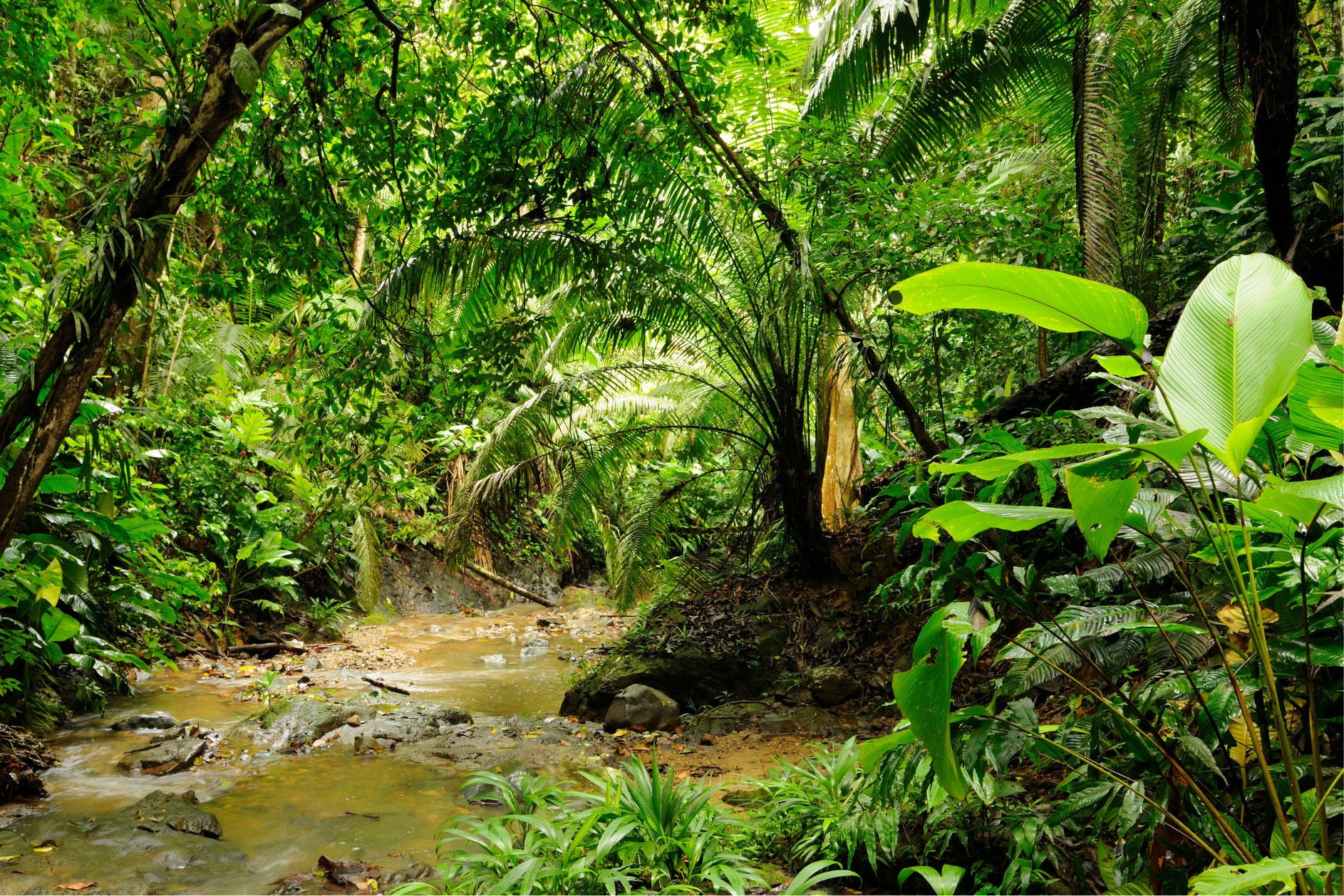
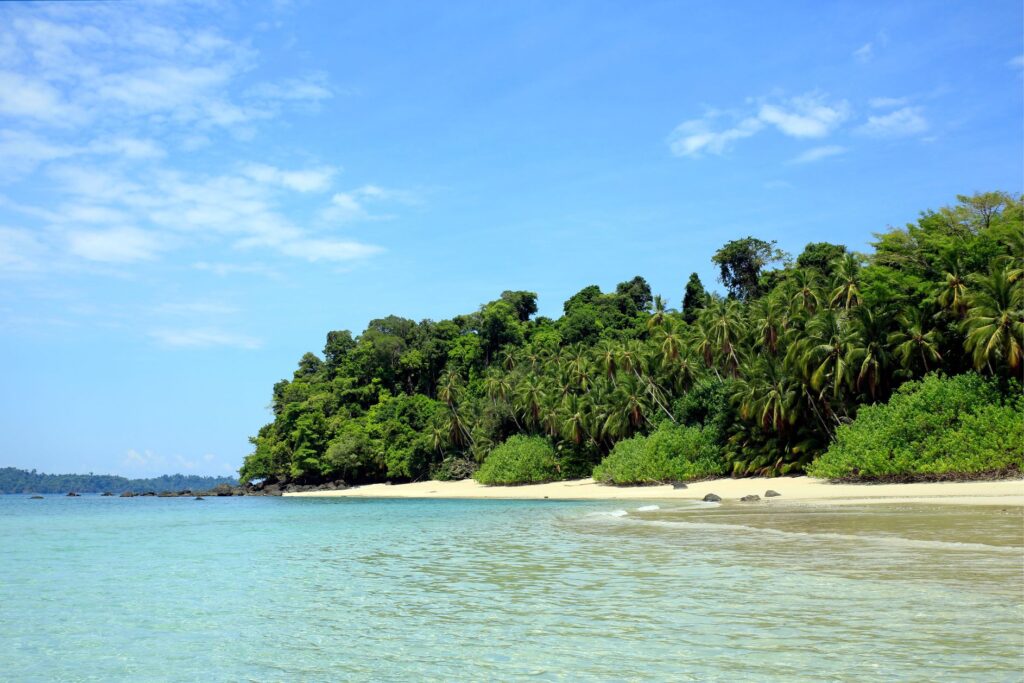

There are over 1,100 world heritage sites spread across more than 165 countries. New ones are added every year, and some may be removed from the list for various reasons.
Number of UNESCO listed sites: 5.
Top world heritage sites:
- Archaeological Site of Panamá Viejo and Historic District of Panamá.- Coiba National Park and its Special Zone of Marine Protection.
- Darien National Park.
- Fortifications on the Caribbean Side of Panama: Portobelo-San Lorenzo.
- Talamanca Range-La Amistad Reserves / La Amistad National Park.
Interesting facts about Panama
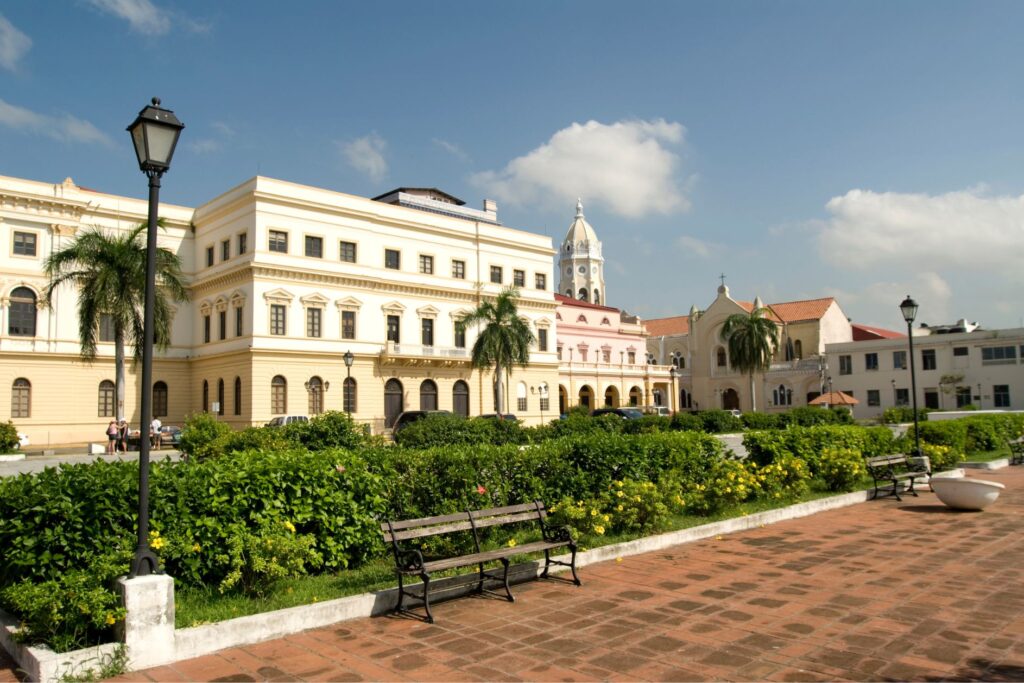
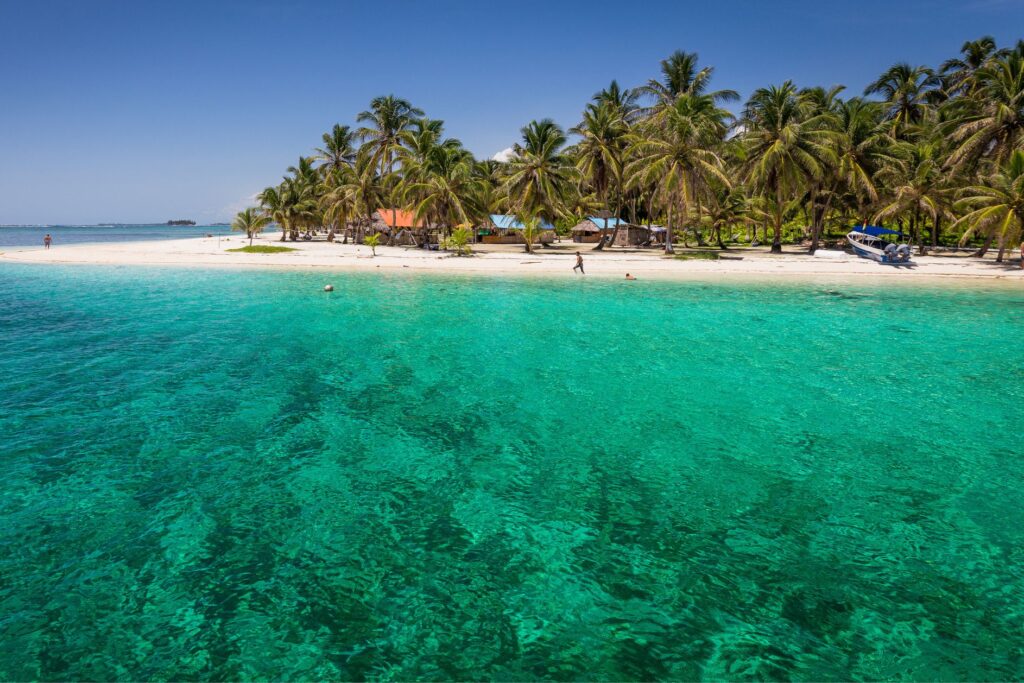
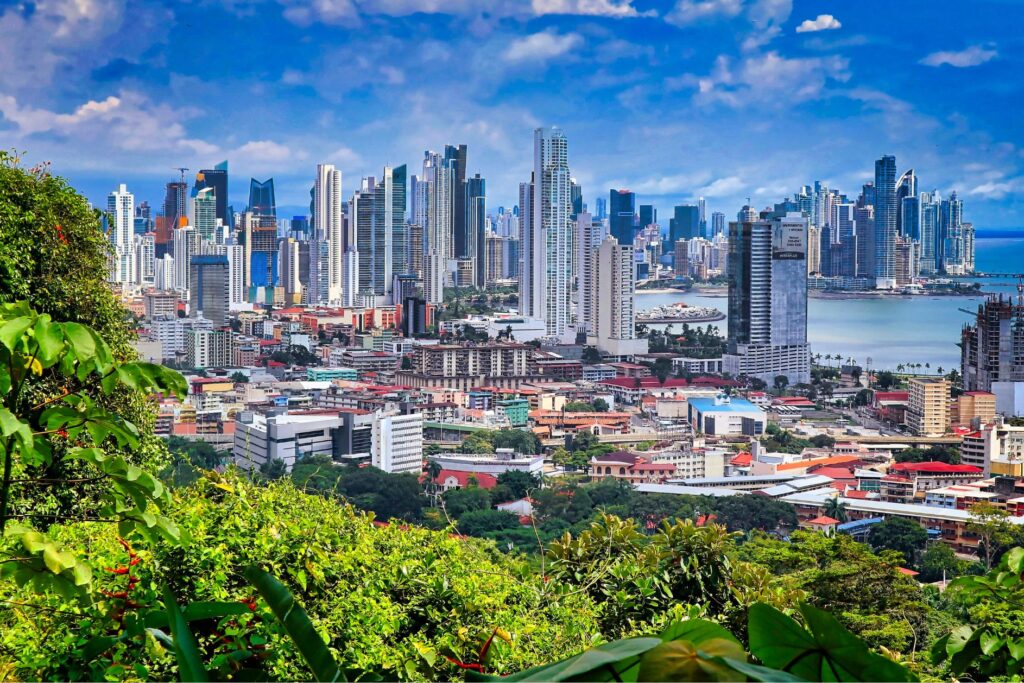
- One of the most famous landmarks in the country is the 80km Panama Canal. The canal connects the Atlantic and Pacific oceans and has great relevance for foreign economies. The canal operates 24h a day 365 days a year and employs 9,000 people.
- The Panama Hat is not actually from Panama, but Ecuador.
- On the summit of Panama’s highest peak, Volcán Barú, it’s possible to see both oceans at the same time.
- Panama's rainforest covers nearly 40% of the country.
Further reading: N/A.
Panama Travel tips
Socket type: A / B. Guide to socket types.
Weekend days: Saturday and Sunday.
Driving: Cars drive on the Right.
Local taxi apps: Didi-Rider, Uber.
Travel Guides: Lonely Planet, Bradt Guide.
Languages spoken: Spanish (official), indigenous languages (including Ngabere (or Guaymi), Buglere, Kuna, Embera, Wounaan, Naso (or Teribe), and Bri Bri), Panamanian English Creole (similar to Jamaican English Creole; a mixture of English and Spanish with elements of Ngabere; also known as Guari Guari and Colon Creole), English, Chinese (Yue and Hakka), Arabic, French Creole, other (Yiddish, Hebrew, Korean, Japanese). Note - many Panamanians are bilingual.
Basic words and phrases in the main language:
Hello: HolaPlease: Por favor
Thank you: Gracias
Help: Necesito ayuda
Learn more with our favorite learning app Mondly.
Find a hotel in Panama
Booking.comBook tours and activities:
More about Panama on Solo Female Travelers
Coming soon.Did you spot any errors? We do our best to keep this information updated and accurate, but things change. If you saw anything that is not right, let us know so we can fix it: [email protected].
About the Solo Female Travel Safety Index
Safety matters to solo female travelers, you told us so in our annual Solo Female Travel Survey, where year after year, women prove that this is their most important concern when traveling solo.
We wanted to do something about it, so we built these country-specific pages where you can find reviews and scores for 7 key variables affecting the safety of women traveling solo.
Variables
- Risk of scam
- Risk of theft
- Risk of harassment
- Attitudes towards women
- UK Travel Advisory
- US Travel advisory
- Global Peace Index (GPI)
Informing OSAC
The Solo Female Travel Safety Score is used by the Overseas Security Advisory Council for including safety concerns for women travelers in their country security reports; OSAC is a partnership between the U.S. Department of State and private-sector security community.
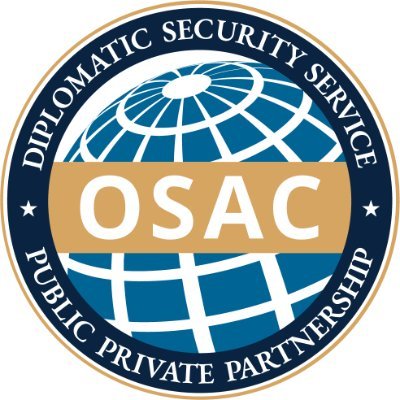
How to use the Safety Index
On this page, you will find the country score and the personal opinions on safety of other women traveling solo.
You can sort the comments by:
- The level of experience traveling solo of the reviewer (beginner = <5 trips solo, Intermediate = 5 to 10 trips solo, Experienced = >10 trips solo).
- The age of the traveler.
- Whether they are a visitor or local.
- The date they were posted.
The safety scores range from 1 to 4 with 1 being the safest and 4 being the most dangerous for solo female travelers.
Thus, the lower the score, the safer the country.
Looking for more safety resources?
This entire website is devoted to helping women travel solo. Check out the links below to learn more:
Solo Female Travel Stats: Results from the the largest, most comprehensive and only global research study on solo female travel trends, preferences and behaviors published.
Thanks to Jacobo Vilella for creating the Solo Female Travelers Safety Index ❤️



